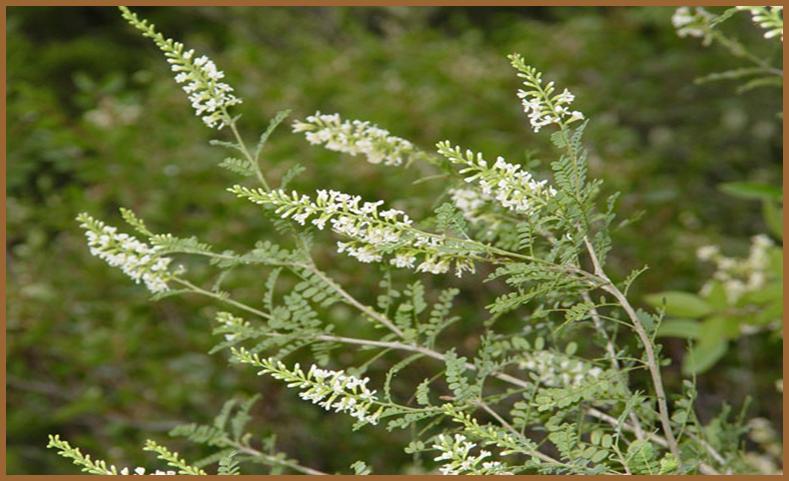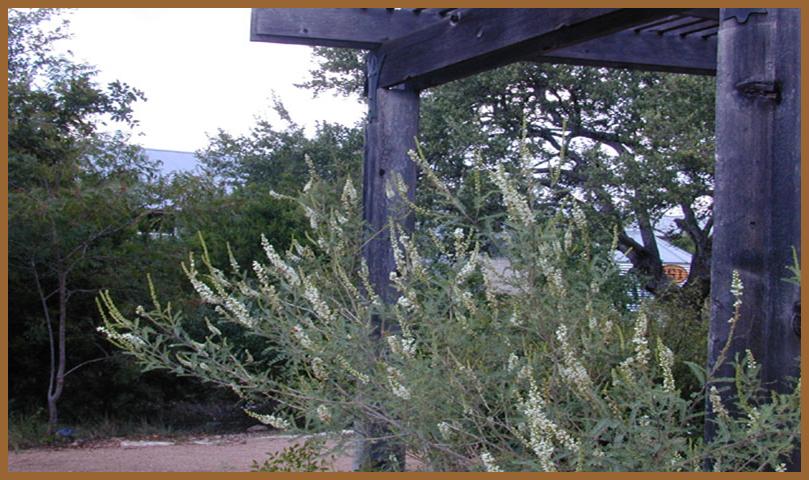Guide to SA Natural Areas & Greenway Trails
I. Texas Kidneywood

LBJ Wildflower Center: NPIN 19734 by Melody Lyttle
Alamo Area Master Naturalist Ron Tullius is the author of this piece.
Texas Kidneywood is a perennial, non-spiny, Texas native; a member of the Pea Family, its multiple trunks show an open, airy habit.
It prefers to grow in the sun, but it will tolerate partial shade. The finely divided, deciduous leaves have the pungent smell of citrus.
SMALL, FRAGRANT, WHITE BLOSSOMS ON ELONGATED STALKS FOLLOWING RAIN
Small, fragrant, white blossoms on elongated flower stalks appear in May, then intermittently through the summer and fall following rains. What creatures would be attracted to an abundance of fragrant flowers?
WHAT CREATURES WOULD BE ATTRACTED TO ITS BLOSSOMS?
Kidneywood is a magnet for butterflies and bees seeking nectar. It’s a host plant for the Southern Dogface butterfly, whose larvae (caterpillars) eat the leaves of Kidneywood.
The fruits are small brown pods attached to the ends of stems in September.
Why name a plant for an organ of the body? It’s not unusual for a plant’s common name to reflect its everyday use as a food, tool, or medicine. Wood from closely related species of Kidneywood was used to treat kidney and bladder ailments.
Would you be surprised to know that the heartwood of this plant produces yellow and orange dyes?
The longer the wood is soaked in water, the more the color deepens. Even more striking is the blue fluorescence visible when the dye is placed against a black background.
EXCELLENT LANDSCAPE PLANT
Kidneywood is heat, cold, and drought tolerant, an excellent landscape plant for this area.
A number of other Texas native trees and shrubs can be seen along the trail.
CAN YOU SPOT GUM BUMELIA, EVE'S NECKLACE, HONEY MESQUITE, BRASIL (CONDALIA,) HACKBERRY & CATCLAW ACACIA?
Look for the spiny stems and cottony leaf undersides of Gum Bumelia (Sideroxylon lanuginosum). Its small, black fruits feed a number of bird species. People used to chew the sap issuing from the bark of the tree, an early form of chewing gum.
Also nearby is Eve’s Necklace (Sophora affinis). Related to Texas Mountain Laurel, Eve’s Necklace, a member of the pea family, produces springtime, drooping clusters of pinkish-white flowers, followed in the late summer and fall by bean pods that resemble strings of shiny, black beads . These “necklaces” will often hang on the gently drooping branches of the tree through the winter. The dense, hard wood of Eve’s Necklace will produce a yellow dye.
As you continue your walk, you will encounter additional native species besides the frequent junipers, persimmons, oaks, and elms. These include Honey Mesquite, Bluewood Condalia, Net-leaf Hackberry, and Catclaw Acacia. Note the variety of leaf shapes, colors, and textures; feel the smooth, rough, and warty barks; and look for the presence or absence of spines.

LBJ Wildflower Center: NPIN 12057 by Joseph A. Marcus.